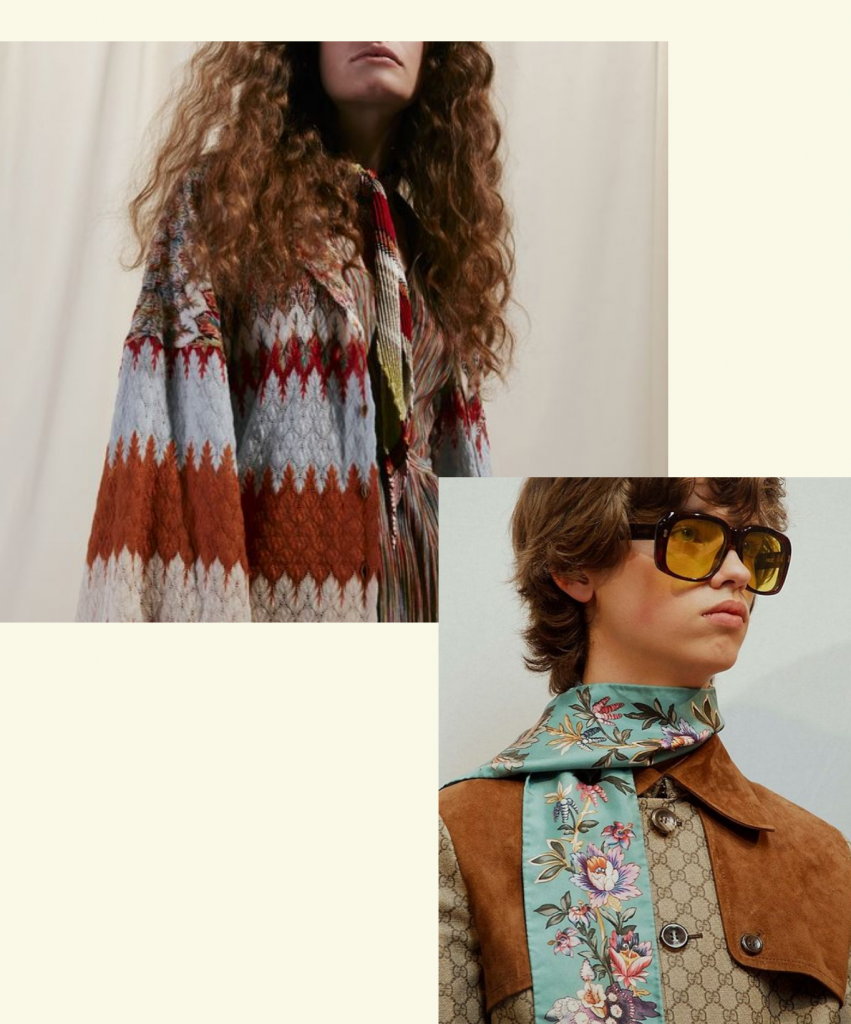
⠀
Let’s remember the most iconic prints of the world’s houses.
These designs on fabric received their “ticket to eternity”, becoming not only classics, but also the calling card of the brands.
They remain relevant and recognizable regardless of time and fashion trends.
Keep reading our atricles to learn more about it!
⠀
Become a Professional Image Consultant!
Study in Italy online and make your dreams come true
⠀
LOUIS VUITTON

The success of Louis Vuitton, which opened its first store in 1854, quickly led to the market being flooded with counterfeits that were so beloved by the French public. Louis Vuitton thought about a quality mark that would distinguish his goods from counterfeits. The idea was further developed by his son, Georges Vuitton, who developed the Louis Vuitton brand monogram: a flower with four petals placed in a circle, a rhombus with a four-pointed star, the same star in a negative version and the initials LV. It is this print that any fashionista unmistakably recognizes today.
GUCCI

“Flora” is a special word for the Gucci house. The charming floral print Flora was born thanks to Princess Grace Kelly of Monaco. The famous guest appeared at the boutique and Rodolfo Gucci, the son of the founder Guccio Gucci, wanted to make a present from Gucci. However, it was not possible to find the perfect accessory. Rodolfo was not at a loss and ordered a new design from the artist Vittorio Accornero. The next day, Vittorio presented the vibrant Flora pattern.
VERSACE

The famous Versace prints with the head of the Gorgon Medusa appeared thanks to the passion of the brand founder Gianni Versace for Ancient Greek mythology. According to Donatella Versace, Gianni Versace chose this particular image because “everyone who fell in love with Medusa could not forget about her.”
FENDI

It was Karl Lagerfeld who worked at Fendi created and drew the Fendi logo. But why is there one letter F in the brand name, but there are two in the logo? Lagerfeld wanted to reflect the brand’s playful attitude towards fashion. He thought “Fendi is Fun” and hid this message in the legendary inverted Double F. At first, the letters FF decorated the lining of fur coats, and then appeared on bags and shoes.
BURBERRY

The famous “tartan” was first used for sewing only the lining of trench coats and coats. In 1967, one of the managers at a Burberry boutique in Paris, while decorating a window, turned the collar of a coat on a mannequin inside out to add color to the composition. Customers liked the checkered fabric as an element of style so much that they wanted to wear this pattern not only on the lining. This is how the first Burberry cashmere scarves appeared in the Nova Check colorway.
MISSIONI

Initially, in 1946, Ottavio Missoni and his wife Rosita planned to sew clothes for athletes, since Ottavio was involved in athletics, and stripes were planned as the main pattern. In 1948, the company achieved success, and the Venjulia suit line from Missoni became the official uniform of the Italian team at the Olympic Games in London. At first Missoni preferred stripes, then it turned into the signature zigzag.
PAUL SMITH

Smith says about the history of the print: “We had little money, and as a menswear designer, I often had to use scraps rather than full-length fabrics. They were terribly boring dark blue with blue or white stripes, or burgundy, or just white. So, when we had enough orders to sew something original, I decided to create an unusual print and came up with a multi-colored stripe”.
DOLCE&GABBANA

It is believed that it was D&G that made leopard print truly popular. Leopard in a variety of shades regularly returns to the brand’s collections. Animal print became a symbol of the brand after the release of the “Animal Prints” collection in 1996, which became iconic.
ETRO

In the early 80s, during a trip to India, Girolamo Etro first saw the patterns that were applied there to cashmere. It was the paisley pattern. “Paisley” is a pattern that is found in the art of Ancient Mesopotamia back in 3000-1000 BC. Since 1981, ETRO has been producing decorative fabrics, on the surface of which paisley patterns are applied. Girolamo Etro experiments with the paisley pattern, which has become iconic for the brand.


